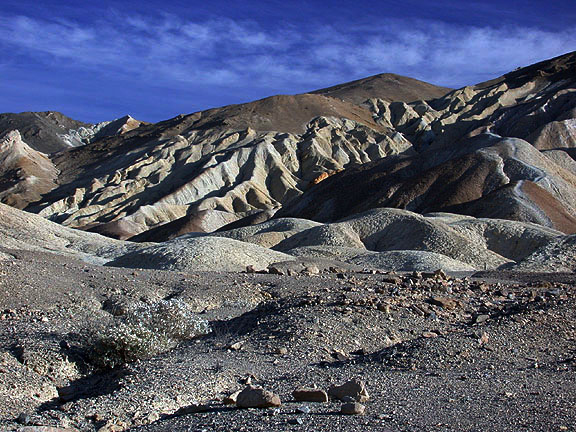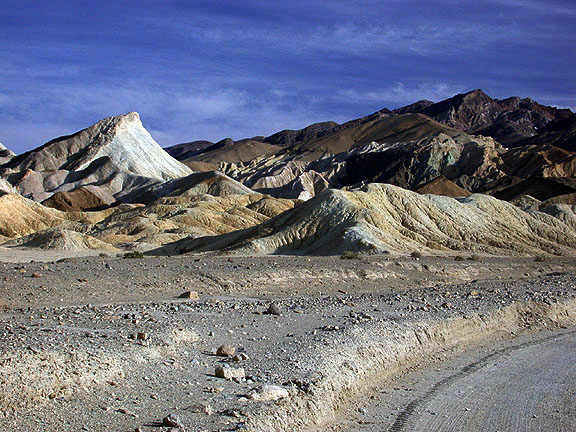
| A view south along the road through 20 Mule Team Canyon to wildly colorful badlands carved in the Middle Miocene Furnace Creek Formation. Here, the Furnace Creek has yielded commercially exploitable quantities of borates, but relatively few fossil remains--save for several species of diatoms, a microscopic single celled aquatic plant, and a leaf fragment (reported by the late paleobotanist Danield I. Axelrod) belonging to a variety of Catalina Ironwood (now restricted to the Channel Islands off the coast of southern California). A few miles to the north, though, in the Salt Spring Hills, vertebrate paleontologists have identified numerous fossil footprints belonging to extinct species of horse, camel, antelope, and birds. The association of grazing mammals suggests that 12 million years ago, the arid Death Valley of today supported a lush grassland habitat. |
